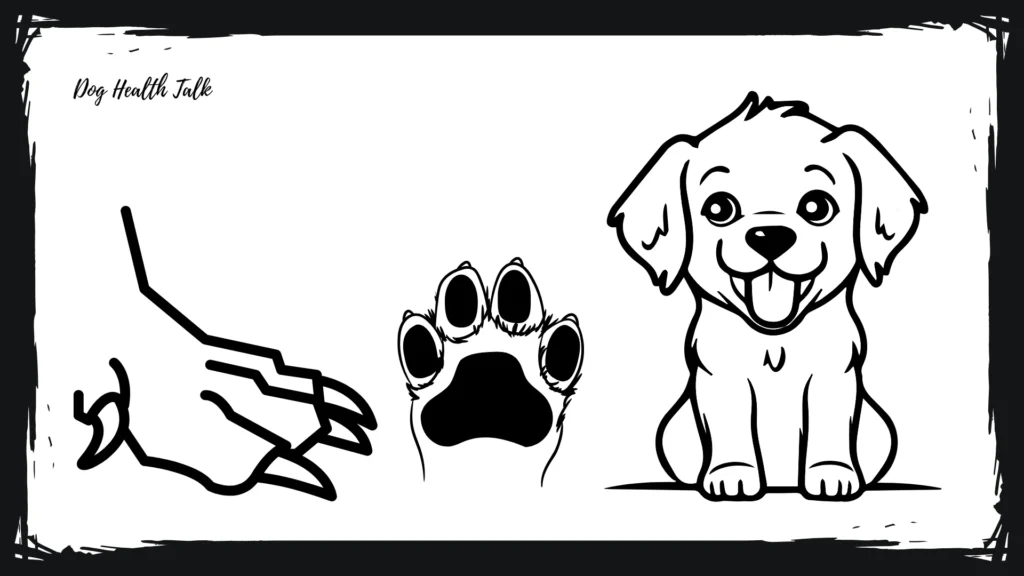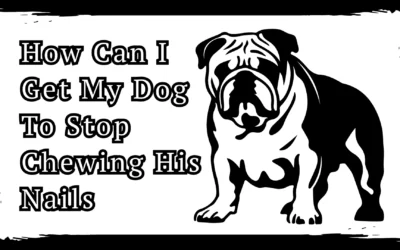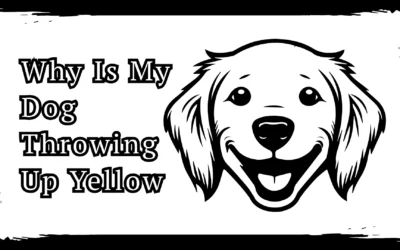Why do dogs bite their nails? What seems like a harmless habit could be your dog’s silent cry for help. From hidden allergies to stress or infections, excessive nail chewing is often a warning sign that something’s not right. Catching it early can save your pup from unnecessary discomfort.
Dogs bite their nails due to stress, boredom, allergies, or irritation from infections or parasites. Long or broken nails can also cause it. Regular grooming, nail trimming, and vet care help stop this behavior.
Understanding the reasons behind nail biting helps pet parents know when to take action. With the right care and attention, this habit can often be managed or completely stopped.
Why Do Dogs Bite Their Nails?

Dog nail biting, medically known as onychophagia, is often a sign of underlying issues such as allergies, infections, anxiety, boredom, or injuries. While it may seem harmless at first, persistent nail biting can lead to pain, bleeding, or serious illness. Identifying the root cause—whether medical or behavioral—is key to stopping the habit and protecting your dog’s health.
Read More: Why Does My Dog Bite His Nails
Allergies Or Skin Conditions
Allergic reactions represent one of the most common medical causes of nail biting in dogs.
- Environmental Allergies: Pollen, dust mites, mold spores, and grass can cause itchy paws, leading dogs to bite their nails for relief.
- Food Allergies: Common allergens like beef, chicken, or dairy may cause inflamed, itchy paw pads, prompting nail biting.
- Contact Dermatitis: Harsh chemicals, cleaning products, or rough surfaces can irritate the skin around the nails, leading to irritation and biting.
- Atopic Dermatitis: A chronic, hereditary skin condition that causes persistent paw itching and inflammation, often triggering compulsive nail-biting.
- Secondary Infections: Bacterial or fungal infections may develop due to damaged skin, which increases the discomfort and reinforces the biting behavior.
- Seborrheic Dermatitis: Imbalances in skin oil production can lead to dry, flaky, or tight skin around the nails, prompting dogs to bite their nails.
Anxiety Or Stress
Psychological factors play a significant role in many cases of chronic nail biting in dogs.
- Separation Anxiety: Dogs left alone may develop nail biting as a self-soothing behavior, which can escalate into obsessive-compulsive tendencies.
- Major Life Changes: The introduction of new family members, pets, or changes in daily routine can trigger stress and anxiety in dogs, often leading to nail biting as a coping mechanism.
- Boredom and Lack of Stimulation: When dogs don’t receive sufficient physical exercise or mental engagement, they may resort to nail biting as a way to release pent-up energy or entertain themselves.
- Past Trauma or Negative Experiences: Negative associations with paw handling can lead to fear-based or defensive nail biting, which may become a chronic habit over time.
Parasites
External parasites pose a significant threat to paw health and can trigger intense nail-biting behaviors in affected dogs.
- Fleas: These pests often hide between the toes and around nail beds, causing intense itching and irritation that prompts dogs to bite their nails for relief.
- Mites (Sarcoptic & Demodex): Infest paw areas, burrow into skin, and trigger severe itching and inflammation, resulting in obsessive nail biting and possible secondary infections.
- Ticks: May attach to paw areas, causing localized irritation that prompts dogs to bite at their nails to remove them.
- Hookworms & Internal Parasites: Can cause overall skin itching due to toxins, leading to excessive paw licking and nail biting as a response.
Also Read: Why Is My Dog’s Nail Turning Black
How Can I Get My Dog To Stop Chewing His Nails
Tip 1: Give Them Something Else to Chew On
Redirecting your dog’s chewing instinct toward safe, appropriate alternatives is one of the most effective ways to stop nail biting. Offering a variety of high-quality chew toys, interactive puzzle feeders, and frozen treats keeps your dog mentally stimulated and physically satisfied, reducing stress and boredom that often trigger destructive behaviors.
These tools not only fulfill their natural urge to chew but also help protect their nails from damage. Training your dog to exchange unwanted chewing for approved items reinforces positive behavior and builds lasting habits—all without increasing anxiety or stress.
Tip 2: Rinse Their Feet Before They Come Inside
Maintaining a regular paw-cleaning routine is an effective strategy to prevent nail biting by eliminating allergens, irritants, and debris picked up during outdoor activities. Gently washing with lukewarm water and pet-safe cleansers helps remove common triggers like pollen, salt, and dirt. Ensuring the paws are thoroughly dried afterward prevents excess moisture, which can create a breeding ground for infections that contribute to discomfort and nail-biting behavior.
Routine inspections during paw cleaning help detect cuts, swelling, or foreign objects early—before they lead to discomfort and nail biting. Combining these sessions with gentle handling and positive reinforcement builds trust, eases anxiety around paw care, and reduces the risk of compulsive chewing behaviors.
Tip 3: Make Sure Your Pup Is Getting Enough Exercise
Adequate physical and mental exercise is essential in preventing stress-related nail biting in dogs. Regular walks, play sessions, and breed-appropriate activities help release excess energy, keeping dogs calm and focused. Mental stimulation through training, scent games, and puzzle toys keeps their minds engaged and reduces boredom—a major trigger for compulsive behaviors.
Structured routines such as agility training or hiking provide both physical and mental stimulation, promoting overall well-being. Maintaining consistent daily exercise helps create a predictable environment, reduces anxiety and stress. This sense of routine and security significantly lowers the chances of destructive behaviors like nail biting from developing.
Signs It’s Time For A Vet Visit
Seek veterinary care if your dog’s nail biting causes bleeding, swelling, limping, or changes in nail appearance. These may signal infections, injuries, or underlying health issues. Consistent biting despite home care, which also needs professional help to rule out medical or behavioral problems. Early intervention can prevent pain, mobility issues, and long-term complications.
Dog Biting And Pulling Nails
This behavior often signals intense discomfort from allergies, anxiety, or pain. Pulling nails can lead to bleeding, injury, and serious infection. It’s a serious issue requiring immediate attention. Early veterinary intervention helps identify the root cause and prevents long-term damage or complications to your dog’s paws.
Why Do Dogs Bite Their Nails At Night
Dogs may bite their nails more at night due to fewer distractions, heightened anxiety, or discomfort from medical conditions such as arthritis or skin issues. Cooler temperatures and increased allergen buildup can worsen irritation. Separation anxiety and circadian rhythm may also increase nighttime biting. Addressing underlying causes is key to reducing this behavior.
Why Do Dogs Bite Their Nails When They
Dogs often bite their nails in response to specific triggers such as being left alone, loud noises, routine changes, or new environments. Stressful situations like moving, meeting strangers, or physical discomfort can heighten anxiety and lead to nail biting. Recognizing these triggers helps pet owners address the root cause and prevent compulsive behavior.
Do Dogs Bite Their Nails To Trim Them
While dogs don’t bite their nails to trim them like humans, they may chew at overgrown or sharp nails that cause discomfort. This instinctive behavior aims to relieve irritation, but it can damage nails and cause possible injury..
Dog Biting Nails And Licking Paws
When dogs bite their nails and lick their paws, it often signals a deeper issue, such as allergies, infections, or skin inflammation. This combined behavior points to widespread paw discomfort rather than isolated nail problems. Common causes include bacterial or fungal infections, allergic reactions, or even obsessive-compulsive behaviors—each requiring proper diagnosis and targeted treatment.
Can Dogs Bite Their Nails Off
Yes, dogs can bite their nails off, but this is a serious and harmful behavior that signals extreme discomfort or psychological distress. It causes intense pain, bleeding, and exposes the nail bed to dangerous infections. Immediate veterinary care is crucial to prevent further damage.
Why Do Dogs Bite Their Tails
While tail biting and nail biting are opposite actions, they often share the same root causes—such as allergies, anxiety, boredom, or pain. Both can be signs of underlying medical or psychological issues and may appear together in dogs prone to compulsive behaviors. Addressing the triggers with proper care, enrichment, and training is key to preventing both.
Must Read: Why Do Dogs Chew Their Nails
FAQs
Is It Normal For a Dog To Chew Their Nails?
Occasional nail chewing is normal grooming behavior, but excessive, persistent, or obsessive nail biting indicates underlying medical or behavioral problems.
Do Dogs Trim Their Own Nails By Biting Them?
Dogs don’t intentionally trim nails by biting, but may chew overgrown claws, causing irregular, damaged nail edges requiring professional trimming.
How Do I Get My Dog To Stop Biting Her Nails?
Address underlying causes, provide appropriate chew toys, increase exercise, use bitter deterrents, maintain regular grooming, and consult veterinarians for persistent cases.
How To Cut Your Dog’s Nails If They Don’t Let You?
Use gradual desensitization training, positive reinforcement, proper restraint techniques, calming aids, or seek professional grooming assistance for fearful dogs.
Is It Bad For Dogs To Eat Nails?
Eating nail clippings isn’t toxic, but swallowing large amounts may cause digestive upset, choking hazards, or intestinal blockages requiring veterinary attention.
What Happens If You Never Cut Your Dog’s Nails?
Overgrown nails cause pain, difficulty walking, joint problems, increased injury risk, infections, and can grow into paw pads, causing severe complications.
Can I Trim My Dog’s Nails Myself?
Yes, with proper tools, training, and patience, most pet parents can safely trim their dogs’ nails at home using appropriate techniques.
Is It Neglect To Not Cut Your Dog’s Nails?
Yes, failing to maintain proper nail length constitutes neglect, as overgrown nails cause pain, mobility issues, and serious health complications.
What Is The Best Thing To Cut a Dog’s Nails With?
Guillotine clippers for small dogs, scissor-type clippers for larger breeds, grinders for gradual trimming, and sharp, well-maintained tools ensure safety.
How Often Should You Trim Dog Nails?
Most dogs need nail trims every 3-4 weeks, though active outdoor dogs may need less frequent trimming than sedentary indoor pets.
Conclusion
Understanding why dogs chew their nails helps pet parents treat the problem with care and confidence. Whether it’s due to allergies, anxiety, or long nails, identifying the cause is key. With regular grooming, mental stimulation, and vet guidance when needed, most dogs can stop this habit. A consistent care routine not only prevents nail chewing but also improves your dog’s comfort, health, and happiness in the long run.




